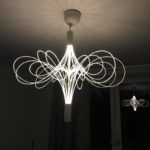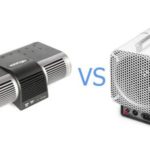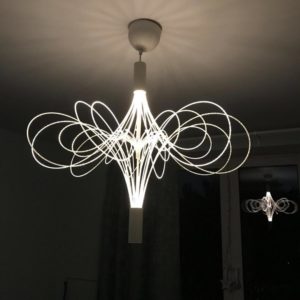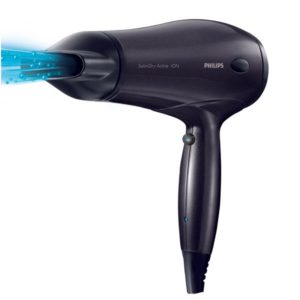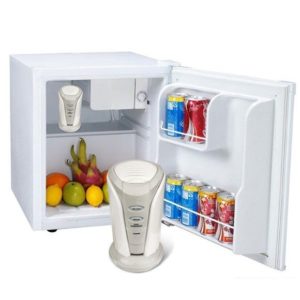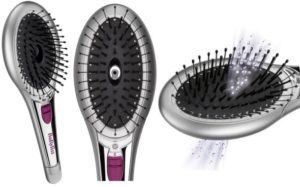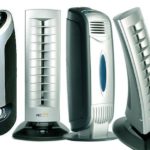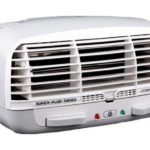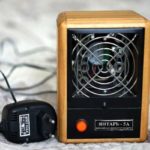Ionizer
What is an ionizer and what is it for?
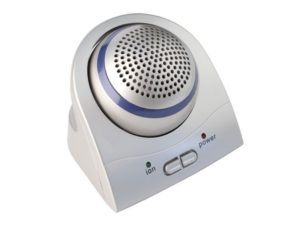 In an urban environment, where activity, high performance and health are constantly required, a curious invention helps compensate for the lack of healthy air - an air ionizer. Gas pollution and constant operation of household and industrial electrical appliances significantly reduce the amount of useful negatively charged oxygen ions.
In an urban environment, where activity, high performance and health are constantly required, a curious invention helps compensate for the lack of healthy air - an air ionizer. Gas pollution and constant operation of household and industrial electrical appliances significantly reduce the amount of useful negatively charged oxygen ions.
To replenish their number, artificial ionization is carried out. Private houses and apartments, medical institutions, organizations, your own car and even a refrigerator - this is the range of places where air enrichment is required.
Who might need this procedure? First of all, elderly people, children and all those who are weakened due to any chronic disease. It is also recommended during epidemics, such as influenza and ARVI. In addition, if you are forced to stay in a closed, unventilated room throughout your working day, then using an ionizer becomes extremely necessary.
Important! According to research, the number of negatively charged particles in a closed room is approximately 10–15 times less than the required values.In the future, such “ion starvation” can lead to decreased immunity, fatigue and loss of performance.
The operation of a device for forced ionization gives the desired effect, eliminating the source of possible allergic reactions, improving the body’s immune system, and making breathing easier.
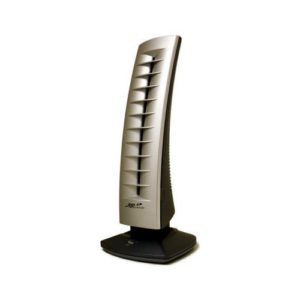 The power of the discharge produced by the device varies, which allows the ionizer to be used for medicinal purposes and as preventive measures. Household models create a favorable atmosphere inside a living space; the so-called Chizhevsky chandelier is used in hospitals. Its power significantly exceeds analogues for private houses and apartments. For drivers whose work involves constantly driving a car, special devices are produced that operate from the cigarette lighter.
The power of the discharge produced by the device varies, which allows the ionizer to be used for medicinal purposes and as preventive measures. Household models create a favorable atmosphere inside a living space; the so-called Chizhevsky chandelier is used in hospitals. Its power significantly exceeds analogues for private houses and apartments. For drivers whose work involves constantly driving a car, special devices are produced that operate from the cigarette lighter.
It is impossible to do without ionization inside the machine, otherwise there is a risk of decreased concentration and rapid fatigue. Finally, every housewife dreams of long-term storage of products while preserving their beneficial properties. Devices installed in the refrigerator are produced specifically for these purposes. The result is the elimination of unpleasant odors and the prevention of the formation of mold and mildew.
Kinds
Devices can be classified on the following basis: the presence of a filter element, functionality, location and method of ionization. Most models are equipped with a filter. It can be water, coal, catalytic, etc.
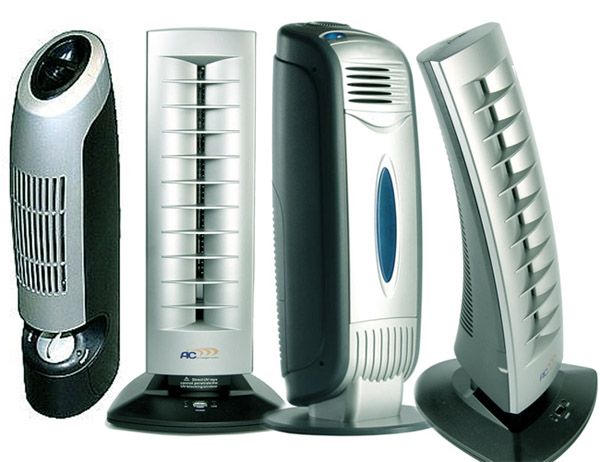
As for functionality, some models are equipped with an additional humidifier. Thanks to it, the humidity in the room can be maintained at the proper level, which is especially important in the cold season when heating devices are operating.
A separate point is the way ionizers enrich the air. The types of devices will be as follows:
- crown;
- radioactive;
- radioisotope;
- thermionic;
- photovoltaic;
- hydrodynamic;
- ultraviolet.
Other options are also possible. But it is worth noting that in rooms where people are expected to stay, only corona-type ionizers should be used. Bulky isotope devices will only reduce the usable living space, and ultraviolet models will be completely harmful due to their harmful effects on the body. Compact and environmentally friendly ionizers are the best choice. But more on that below.
Operating principle, technical characteristics and features of use
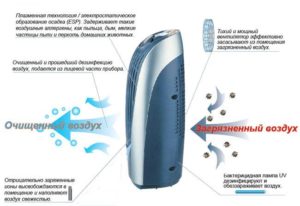 The operating principle is reminiscent of the operation diagram of the Chizhevsky chandelier. Inside the device there are negative and positive electrodes with sharp ends. They are supplied with voltage, which causes a corona discharge. As a result, a large number of charged particles are released into the air, which mix with oxygen molecules. Thus, particles with a negative charge saturate the air in the room. Moreover, the effect of the particles extends over a radius of approximately 2–3 meters.
The operating principle is reminiscent of the operation diagram of the Chizhevsky chandelier. Inside the device there are negative and positive electrodes with sharp ends. They are supplied with voltage, which causes a corona discharge. As a result, a large number of charged particles are released into the air, which mix with oxygen molecules. Thus, particles with a negative charge saturate the air in the room. Moreover, the effect of the particles extends over a radius of approximately 2–3 meters.
The design features of ionizers allow us to distinguish two types: unipolar - models that produce only negatively charged ions, and bipolar, which also produce positively charged particles. Bipolar models have proven themselves well in residential buildings, unipolar ones are installed in office premises.
The defining technical characteristic of an ionizer is the number of ions it produces.In terms of electricity consumption, the models are economical, since the average figures are approximately 10 W per hour.
Reference! When you turn on the device for the first time, dizziness and fatigue may occur as a side effect. This phenomenon is quite normal; over time, the body gets used to it and stops reacting so strongly to the operation of the ionizer.
However, if your health continues to deteriorate, you should stop using the device and consult your doctor. In general, it is advisable to ensure that there are no people in the room while the device is operating.
Advantages and disadvantages
The positive aspects of ionizers are as follows:
- they help eliminate viral pathogens and allergens;
- their use acts as a prevention of diseases of the cardiovascular system;
- contribute to increasing the overall immunity of the body;
- reduce fatigue;
- are able to create a comfortable environment in the room;
- eliminate the lack of oxygen enriched with negative particles;
- reduce the harmful effects of toxins released into the air from plastic items, linoleum, etc.;
- they are harmless to computers, microwave ovens and other household appliances;
- neutralize excessive amounts of positively charged particles accumulating in the room due to the action of electrical equipment;
- economical and easy to use.
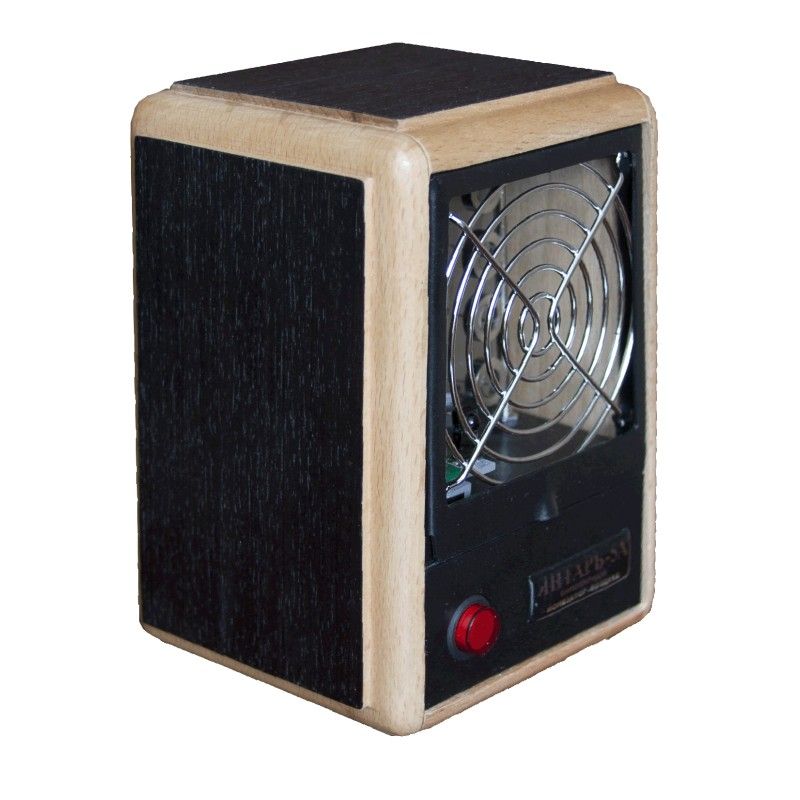
The negative sides are:
- with intensive use of the device and a reduced level of humidity, the air becomes electrified, increasing the likelihood of static discharge;
- if the room is poorly ventilated, the air becomes oversaturated with ions, which can cause respiratory diseases;
- if installed incorrectly, there is a risk to the health of people in the room;
- operation of the device leads to the accumulation of dust, which entails the need for regular wet cleaning;
- it is possible that the ozone content in the air may exceed, which can lead to poisoning;
- some models are expensive.
It becomes clear that almost all the negative aspects are associated with non-compliance with the rules for installing and operating ionizers.
Recommendations for selection
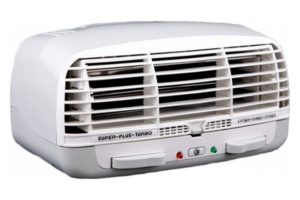 Users who already have experience using air ionization devices are advised to carefully study the characteristics of various models before making a choice. Studying reviews on relevant sites will come in handy. General recommendations call for attention to a number of significant factors.
Users who already have experience using air ionization devices are advised to carefully study the characteristics of various models before making a choice. Studying reviews on relevant sites will come in handy. General recommendations call for attention to a number of significant factors.
The most important selection criterion is the concentration of negative ions that is created by the device. The range of optimal values is quite large - from 400 to 50,000 units/cm3. It is important to take into account the area of the room and know that the maximum permissible concentration is 0.03 mg/m3.
The instructions for the device, as a rule, indicate the ideal operating time of the device in a room with a particular area. In addition, you need to have a clear idea of where the ionizer will be located. This is extremely important, since a person being near a working device is fraught with negative consequences for his health.
If the installation of additional equipment for air humidification in the room has not been thought out, then it makes sense to pay attention to models with a built-in humidifier.Modern ionizers are equipped with special sensors and indicators, a control panel, which undoubtedly simplifies the operation of the device, but does not affect its functionality in any way. It is up to the buyer to decide whether to give preference to the latest technical innovations or not.


